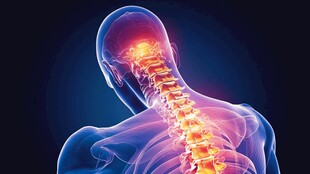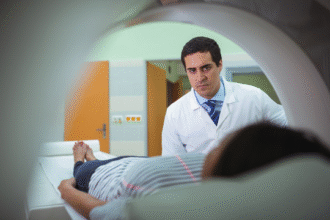Toxicities of Liver Radiotherapy with Emphasis on Radiation-Induced Liver Disease (RILD)
1. Overview
Liver radiotherapy (RT)—including stereotactic body radiotherapy (SBRT), hypofractionated IMRT, and particle therapy—can achieve high local control in hepatocellular carcinoma (HCC) and intrahepatic malignancies. The therapeutic index is constrained by the radiosensitivity and limited regenerative reserve of cirrhotic or steatotic liver parenchyma. Radiation‑induced liver disease (RILD) remains the dose-limiting complication for whole or partial liver irradiation.
- 1. Overview
- 2. Clinical Definitions
- 3. Pathophysiology Snapshot
- 4. Risk Factors
- 5. Dosimetric Considerations (Conceptual)
- 6. Laboratory & Imaging Surveillance
- 7. Differential Diagnosis of Post-RT Hepatic Dysfunction
- 8. Prevention Strategies
- 9. Management of Suspected RILD
- 10. Special Scenarios
- 11. Emerging Mitigation Approaches
- 12. Key Distinctions: Classic vs Non-Classic RILD
- 13. Key Takeaways
2. Clinical Definitions
| Type | Time to Onset (Typical) | Core Criteria | Notes |
|——|————————|————–|——-|
| Classic RILD | 4–12 weeks post-RT | Anicteric hepatomegaly, ascites, elevated ALP (≥2× baseline or above ULN) | Historically after whole-liver 30–35 Gy conventional RT |
| Non-classic RILD | 2–12 weeks | Marked transaminase elevation (≥5× baseline/ULN) ± jaundice, without ascites/hepatomegaly | More common in cirrhosis + focal modern RT |
| Subclinical hepatic injury | During/early post-RT | Mild LFT drift (Grade 1–2) | Often transient; monitor trends |
3. Pathophysiology Snapshot
- Initial endothelial injury → sinusoidal congestion and central vein obstruction (veno-occlusive phenotype).
- Cytokine milieu: Upregulated TGF‑β, TNF‑α, IL‑6 drives stellate cell activation → collagen deposition.
- Microvascular thrombosis and impaired hepatic outflow escalate portal pressure → ascites.
- In non-classic RILD (often in viral hepatitis or targeted therapy combination), direct hepatocyte injury and inflammation may predominate over venous outflow obstruction.
4. Risk Factors
| Category | Factors Increasing RILD Risk |
|———-|—————————–|
| Patient | Child-Pugh B/C, ALBI grade 2–3, active hepatitis B/C replication, obesity/NAFLD, prior hepatectomy |
| Tumor | Large target volume (>700 cc high-dose), multifocal involvement |
| Treatment | High mean liver dose, inadequate sparing of functional subsegments, concurrent hepatotoxic systemic agents (TKIs, capecitabine), repeated locoregional therapy (TACE, Y-90) |
| Biological | Elevated baseline AFP, inflammatory markers (CRP) |
5. Dosimetric Considerations (Conceptual)
| Parameter | Common Planning Goal* | Rationale |
|———–|———————-|———–|
| Mean Liver Dose (MLD, non-tumor) | <15 Gy (SBRT 3–5 fx context) | Correlates with reduced classic RILD |
| V30 (non-tumor liver) | Keep as low as achievable (<30%) | Cumulative parenchymal preservation |
| Spare Functional Liver Volume | ≥700 cc receiving <15 Gy | Maintain synthetic capacity |
| Dose to Portal Triads | Minimize high-dose near hilum | Reduce biliary complications |
| Adaptive Replan Triggers | >5–10% volume or positional shift | Preserve constraints over course |
*Institutional and protocol-specific; consult TG‑101 / NRG guidelines.
6. Laboratory & Imaging Surveillance
| Timepoint | Tests / Imaging | Purpose |
|———-|—————–|———|
| Baseline | LFTs, INR, albumin, bilirubin, viral serologies, ALBI, Child-Pugh | Risk stratification |
| Weekly (during SBRT >5 fx or hypofractionated) | LFT panel | Early drift detection |
| 4–6 weeks post-RT | LFTs + imaging if symptomatic | Identify early RILD or progression |
| 8–12 weeks | Triphasic CT/MRI | Response + late toxicity assessment |
7. Differential Diagnosis of Post-RT Hepatic Dysfunction
| Presentation | Alternative Etiologies to Exclude |
|————-|———————————|
| Ascites & hepatomegaly | Tumor progression, portal vein thrombosis, cardiac failure |
| Transaminase flare | Viral reactivation (HBV DNA), drug-induced liver injury, ischemic hepatitis |
| Jaundice | Biliary obstruction (tumor, stone), hemolysis |
8. Prevention Strategies
| Strategy | Implementation | Impact |
|———-|—————|——–|
| Patient optimization | Control HBV with antiviral; manage ascites; nutrition support | Improves tolerance |
| Functional imaging (emerging) | 99mTc-MAA SPECT, gadoxetic MRI to map function | Spare high-function segments |
| Motion management | Breath-hold, gating, 4D planning | Reduce PTV margins → lower MLD |
| Adaptive replanning | Mid-course imaging for anatomical shifts | Maintain constraints |
| Fractionation tailoring | More fractions for central/large lesions | Reduce peak microvascular insult |
| Avoid hepatotoxic polypharmacy | Sequence TKIs/chemo around RT window | Minimize compounded injury |
9. Management of Suspected RILD
| Step | Action |
|——|——–|
| 1 | Confirm clinical pattern; rule out progression & alternative causes (Doppler US for PV patency; HBV DNA) |
| 2 | Supportive care: Sodium restriction, diuretics for ascites, albumin if hypoalbuminemic |
| 3 | Consider corticosteroids (empirical) in early inflammatory phase (evidence limited) |
| 4 | Manage portal hypertension (beta blockers, paracentesis) |
| 5 | Escalate to hepatology: Evaluate for TIPS in refractory portal hypertension |
| 6 | Monitor labs q1–2 weeks until stabilization; adjust or hold hepatotoxic systemic agents |
10. Special Scenarios
| Scenario | Considerations |
|———-|—————|
| Child-Pugh B before RT | Stricter MLD goals; consider proton therapy or dose reduction |
| Prior Y-90 or multiple TACE | Cumulative microvascular damage—lower tolerance | Reassess functional reserve carefully |
| Concurrent TKI (e.g., sorafenib) | Potential additive hepatotoxicity | Intensified LFT surveillance |
| Re-irradiation | Summation of prior dose essential; functional avoidance planning |
11. Emerging Mitigation Approaches
| Approach | Rationale |
|———-|———-|
| Proton/Carbon ion therapy | Reduced integral dose → lower MLD |
| Radioprotectors (investigational) | Antioxidant / anti-fibrotic modulation (e.g., amifostine analogs) |
| Biomarker monitoring | Early cytokine profile shifts (IL‑6, TGF‑β) predictive modeling |
| AI-based dose-toxicity models | Personalized constraint adaptation |
12. Key Distinctions: Classic vs Non-Classic RILD
| Feature | Classic | Non-Classic |
|———|——–|————|
| Ascites | Common | Often absent early |
| ALP Elevation | Prominent | Variable |
| Transaminases | Mild–moderate | Marked (≥5×) |
| Underlying Cirrhosis | Not required | Frequently present |
| Macrovascular Invasion | Less defining | Often coexistent |
13. Key Takeaways
- RILD risk is a multifactorial interplay of baseline hepatic reserve, mean liver dose, and concurrent hepatotoxic exposures.
- Classic RILD manifests with anicteric hepatomegaly, ascites, and ALP elevation; non-classic patterns show marked transaminase spikes ± jaundice without ascites.
- Strict adherence to modern dose constraints and functional sparing techniques is central to mitigation.
- Management is largely supportive; early exclusion of alternative etiologies prevents misattribution and inappropriate delays in systemic therapy.
- Emerging functional and biologically adaptive planning may further reduce clinically significant hepatic toxicity.
Disclaimer: Educational resource; apply within institutional guidelines and individualized patient context.







